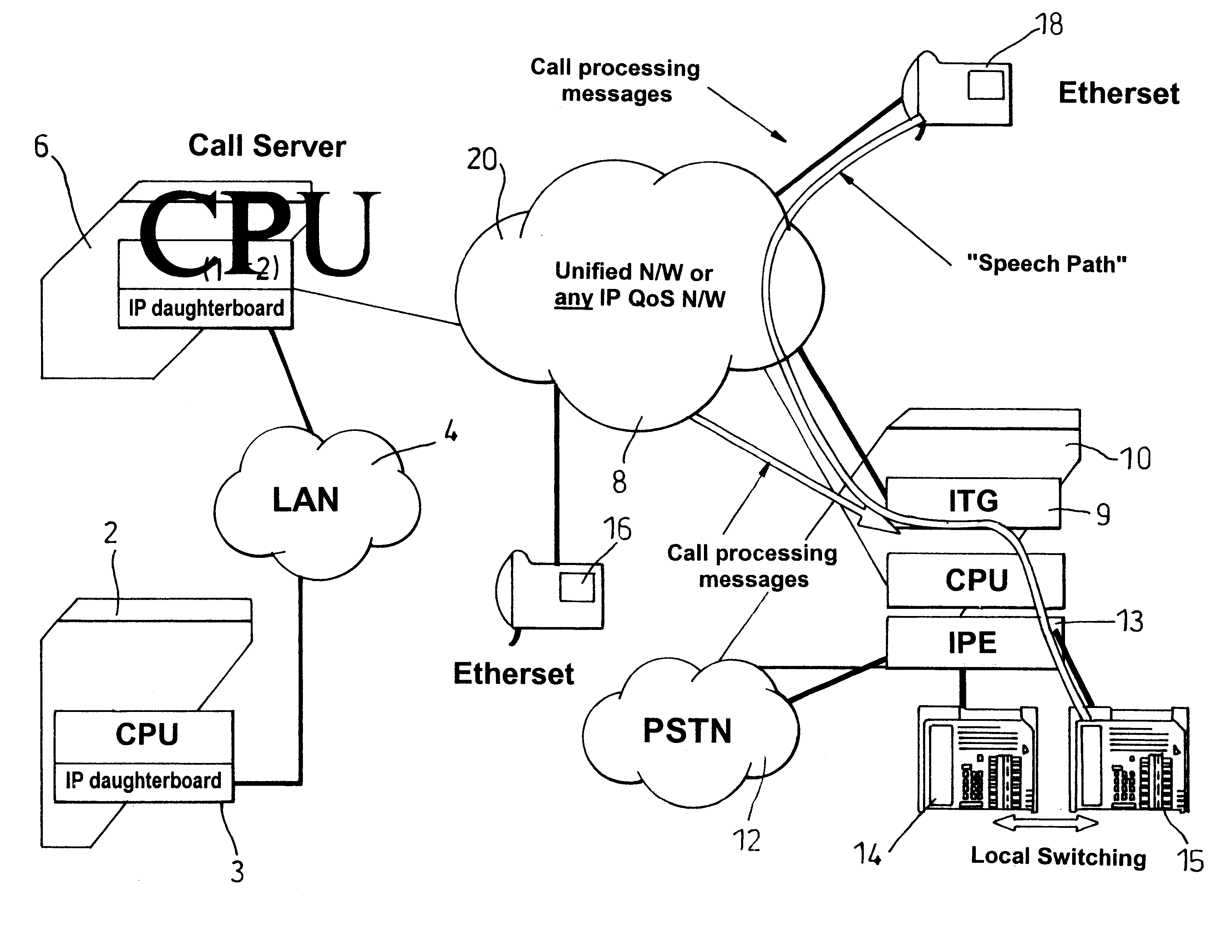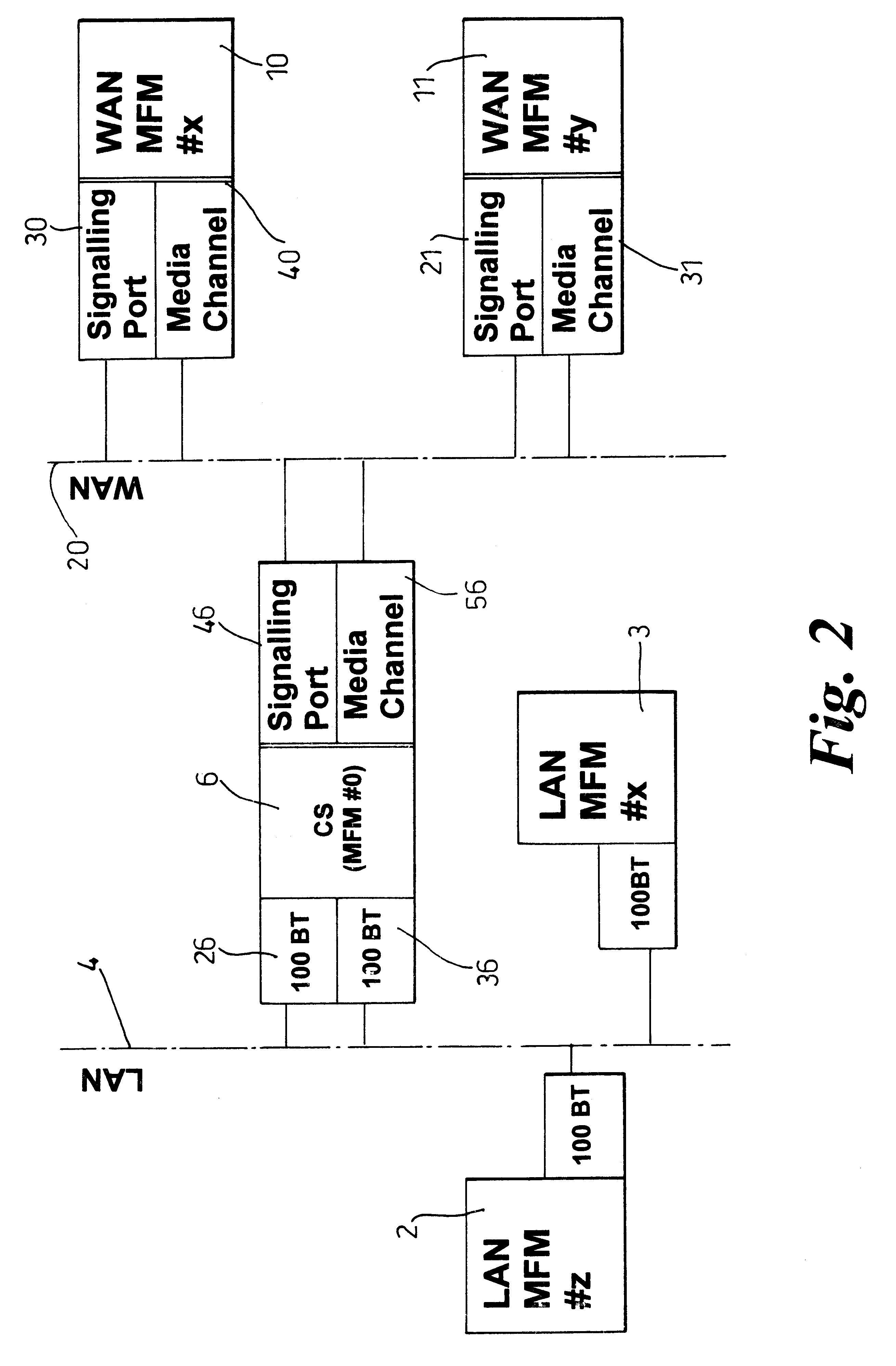Network based distributed PBX with connection loss survival features
- Summary
- Abstract
- Description
- Claims
- Application Information
AI Technical Summary
Problems solved by technology
Method used
Image
Examples
first embodiment
The survival of locally established calls on an access module after connection failure to the call server will now be described for the present invention with reference to FIGS. 7 to 11. In particular, how calls can be handled correctly after switch over and / or switch back process will be described.
As explained above an access module such as a WAN AM 10 in normal mode checks its connection with its Call Server 6 continuously. This check allows each access module 10 to detect the link down condition. When this "connection down" state is detected, the access module 10 switches over from the normal mode to survival mode. If required, a power unit local to the access module 10 is activated immediately when the connection to the call server 6 is down. All calls which are not local to the access module 10 are dropped. Upon switch over of an access module 10 from normal mode to survival mode, call clean up is performed on the call server 6 for that module.
The decision to switch from normal...
second embodiment
In the following the present invention will be described with reference to FIGS. 13 to 17 in which two call servers are used, one active call server 6 and one hot-standby call server 60. All call servers 6, 60 and all access modules 10, 11 of this system preferably have the same configuration database in their respective memories. At start up, all access modules 10, 11 try to connect to the Call Server 6. After a defined time (timer expiration), an access module 10 which does not receive an "accept connection" from the Call Server 6, tries to register itself to the Call Server 60. After a further time-out without acceptance, it goes into Survival mode.
In accordance with this embodiment locally established calls are maintained when an access module is no longer controlled by one call server and switches to the control of the other call server. Let us assume that Call Server 6 controls the Call processing of the module i (10) and the module j (11) (FIG. 13). The network memory 41i and...
PUM
 Login to View More
Login to View More Abstract
Description
Claims
Application Information
 Login to View More
Login to View More - R&D
- Intellectual Property
- Life Sciences
- Materials
- Tech Scout
- Unparalleled Data Quality
- Higher Quality Content
- 60% Fewer Hallucinations
Browse by: Latest US Patents, China's latest patents, Technical Efficacy Thesaurus, Application Domain, Technology Topic, Popular Technical Reports.
© 2025 PatSnap. All rights reserved.Legal|Privacy policy|Modern Slavery Act Transparency Statement|Sitemap|About US| Contact US: help@patsnap.com



